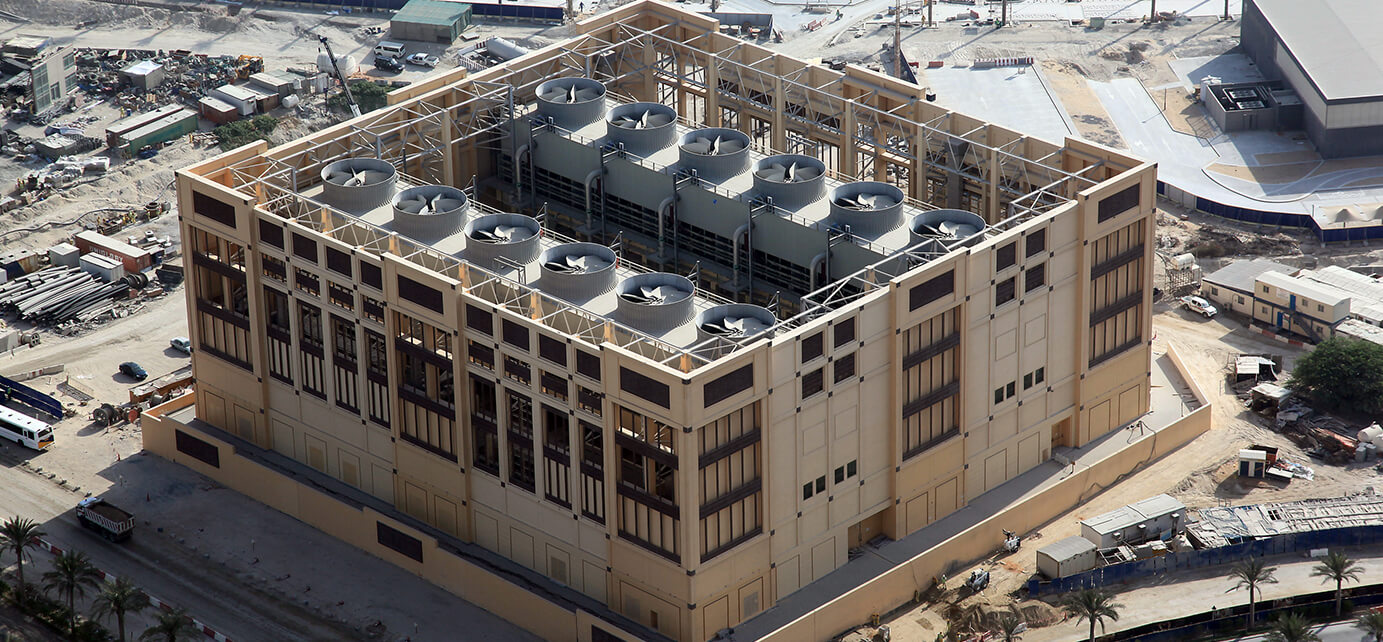Location: KIFAF Cooling Tower Project – Dubai
Scope: High ambient temperature and re-circulation between the units degrade the cooling capacity of cooling towers. It also depends on various other factors like:
-
Placement of the cooling tower/chiller
-
Spacing between the cooling tower/chiller
-
Velocity of the wind
-
Direction of the wind
-
Distance from the nearby buildings
-
Nearby heat sources and water bodies
In the case, where there are more than one cooling tower stacked side by side, then there might be a probability for the saturated exit air from one cooling tower of entering into other cooling tower and thus their placement and orientation with respect to each other play an important role. Mechartes with its vast experience, studies this phenomenon using Computational Fluid Dynamics (CFD). By using CFD simulations we can study the percentage of re-circulation and velocity profile within the yard before the installation of the unit. Mechartes have carried out CFD simulations during the design stage to study the percentage of circulation and provide solutions to proper placement of the units.
Along with the effect on the performance, the effective dispersion of exhaust plumes from chillers and cooling towers into the atmosphere is crucial for health and safety of occupants, and in some cases.
Recently, many municipal corporations have strictly advised not to install cooling towers next to air intakes or windows that may be opened because of a bacterial disease called “Legionella”. Approximately 18,000 people get hospitalized yearly because of Legionella (Source: Centers for Disease Control & Prevention)
Mechartes, with the help of CFD, help you to study how dispersion of discharge plumes i.e plume travel from the cooling towers and chillers can have an impact on the surrounding pedestrian locations considering the effect of wind speed, wind direction and other impactable parameters
Mechartes provides insights to the following studies using CFD:
-
Prediction of recirculation percentage at each inlet of the units.
-
Prediction of dry and wet bulb temperature.
-
Prediction of cooling tower plume dispersion
-
Determination of chiller/cooling tower spacing and orientation
-
Optimization of placement of chillers/cooling towers.
-
Plume travel distance.
Applications Areas:
-
District Cooling Plants
-
Large Commercial and Public Buildings
-
Data Center Building
-
Industrial applications
-
Thermal Power Plants
-
Processing Plants
-
Petroleum Refineries

